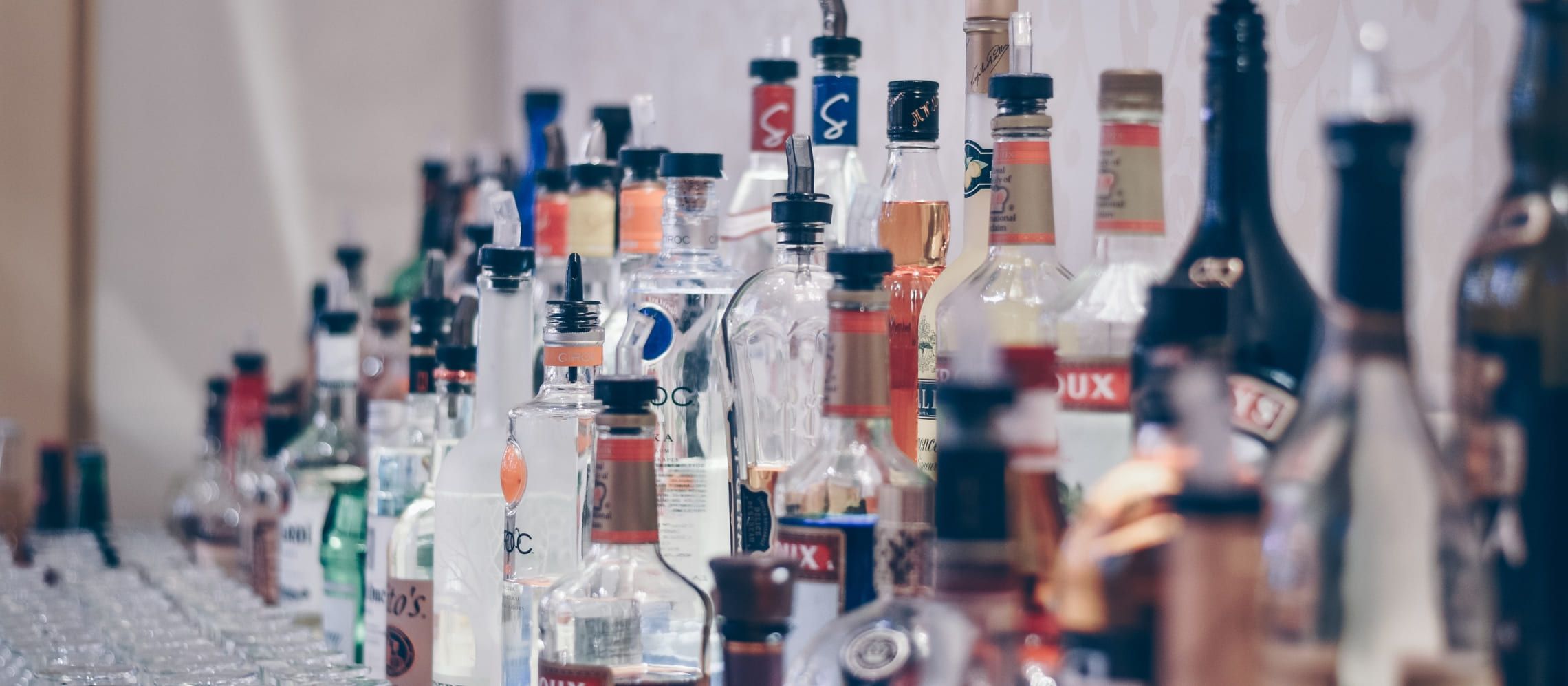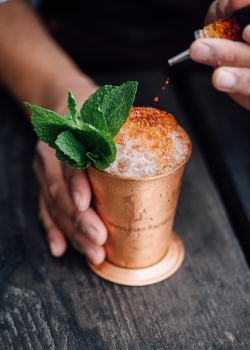Submission Deadline
28 February 2026
Judging
Date
24 & 25 March 2026
Winners Announcement
22 April 2026
28 February 2026
24 & 25 March 2026
22 April 2026

It’s that word again – craft. Whilst cocktails are very much on an upward trend and ‘of the moment’, with mixologists presenting consumers with some wonderful and hugely satisfying tastes, crafted from a whole range of ingredients, it’s that dash of bitters – an ingredient added in the smallest of proportions – that both tempers and highlights, and can make the difference between a good and a great cocktail: they are the salt on the crisp, as it were, bringing out the flavor notes and turning just ‘OK’, into A‘OK’.
Whilst you can find some pretty exotic ingredients being added to cocktails today – even meaty ones like chorizo, bone broth, gravy and bacon (all true, if a little surprising) – bitters are not something new at all and have been around for a considerable time before the ‘rediscovery’ of classic cocktails and so-called ‘new’ ingredients. What’s true today is that bitters are certainly enjoying a real ‘renaissance’ as the cocktail scene expands and are being added to more than the classics – think Old Fashioned (white sugar cube, 2 dashes of bitters, measure of bourbon, finish with a slice of orange) and Champagne Cocktail (sugar cube – white again, 2 dashes of bitters, glug of brandy, then Champagne to fill the glass).

Both Angostura – a secret recipe (it’s named after a place, not Angostura bark which, thankfully, it doesn’t contain) has flavors of cardamom, nutmeg, and cinnamon – and Peychaud’s – somewhat sweeter, with flavors of anise, cloves, nutmeg and a hint of cherry – are highly aromatic bitters that date back to the early part of the 19th Century. These are really the two best-known brands and have managed to withstand the vicissitudes of Prohibition and other changes to the law (bitters are surprisingly high in alcohol – the Angostura website even asks for proof of age to access) when others fell by the wayside.
Their origins are to be found in herbal concoctions (steeped in alcohol) said by their medical and chemist creators to have curative properties designed to ease the burden of the myriad maladies suffered in the hot and disease-ridden climates where they were conceived. Medicinal qualities aside, the fact that these tinctures also tasted bitter was no doubt part and parcel of the cure and the notion of doing the patient well.
Thankfully we have a range of scientifically-based and proven medicines today to deal with our illnesses and bitters can fulfill a role as a pleasant and rewarding addition to our taste experience and cocktails repertoire.
Just as that repertoire expands at something approaching the speed of light, so the use of bitters in cocktails has followed, as have the number of bitter brands and flavor profiles, with bartenders using different bitters for different drinks.
Whilst ‘classic’ Angostura was the ‘original’ ingredient in the pink gin, drunk especially in the British Royal Navy (and not just for the purported medicinal properties of the bitters – the quinine in a gin & tonic undoubtedly has more – but because the tonic cost more to buy than the duty free shipboard gin), today you’ll find bars that mix a great gin & tonic with a range of other bitters. These include Angostura Orange bitters, the first new product launch for the company for nearly 200 years, or Regan’s Orange Bitters No.6, a newcomer, launched only in the early 1990s. Come to that, orange bitters make a pleasant lightly orange-flavored gin or vodka Martini, too – a great cocktail for a warm summer’s evening – but they also go particularly well with spirits with an innately stronger flavor, both Scotch and whiskey, as in an Old Fashioned (apparently still the world’s favorite cocktail, orange bitters or not). Some cocktail-makers use both Angostura and Regan’s in the classic Manhattan (rye whiskey, sweet vermouth, and bitters). Beyond orange, others include fig or cherry bitters in their whisk(e)y cocktails – and we simply can’t leave out the classic New Orleans Sazerac using Peyraud’s bitters. In fact, it’s said that Antoine Peyraud was the inventor of this particular drink.
The range of bitters flavors extends far beyond orange – staying with gins & tonic, you can find bars serving bitters with different flavor profiles, including celery, cherry & vanilla, blueberry. Other citrus bitters, such as grapefruit, lemon or lime, go particularly well with tequila cocktails, like the Diablo Azul (with lime juice, yellow Chartreuse, Cointreau, and Bitter Truth grapefruit bitters).
Unsurprisingly, celery bitters go extremely well with a Bloody (or Virgin) Mary or a Caesar cocktail, Canada’s national cocktail drink. The Caesar is already a Bloody Mary from another dimension with its inclusion of clam juice (tomato-clam juice, bought ready-mixed!), and celery bitters add to the flavor notes. It’s the same with nut bitters and how they heighten a Chocolate Martica (rum, cognac, sweet vermouth, maraschino liqueur, Bitter Truth chocolate bitters) and an Espresso Martini (coffee bitters, of course). Beyond rum cocktails with chocolate bitters, it’s not that difficult to find cocktails made with tequila, mezcal, whiskey, scotch, champagne, Pernod and Campari which also include chocolate bitters.
Fee Brothers, a company dating from the mid 19th Century, have the distinction of possibly having the widest range of bitters, from their Old Fashion Aromatic Bitters, through nut bitters (both chocolate and walnut), to spice bitters (cardamom), and a whole range of fruit bitters, including cherry, grapefruit, lemon and lime, peach, plum and rhubarb – and more.
There’s no sign at all that consumer interest in provenance, distinctiveness, and innovation is slowing down, nor the willingness of consumers to try new tastes, which continues to lead to the introduction of new and premium craft drinks in general, and spirits and liqueurs in particular (but craft beers and ciders, too). Experimentation is the name of the game as far as consumers are concerned, mirrored in a never-ending expansion in the cocktails using these ingredients and being offered to discerning customers, crafted by bars and restaurants keen to provide unique taste experiences.
It’s the search for these unique tastes that are largely behind the introduction of bitters that go to creating that ‘something special’. By some counts, far from the Angostura and Peyraud bitters of yesteryear, there’s a new introduction of a unique flavor profile bitter coming onto the market almost on a weekly basis, with some specialist stores stocking over 100 different versions, or brands – and counting.
Bitter in taste, perhaps, but one has to say it also smacks of the sweet taste of success!
Show your spirits where it matters. Get your products tasted by top bartenders, buyers and experts at the London Competitions — enter now.